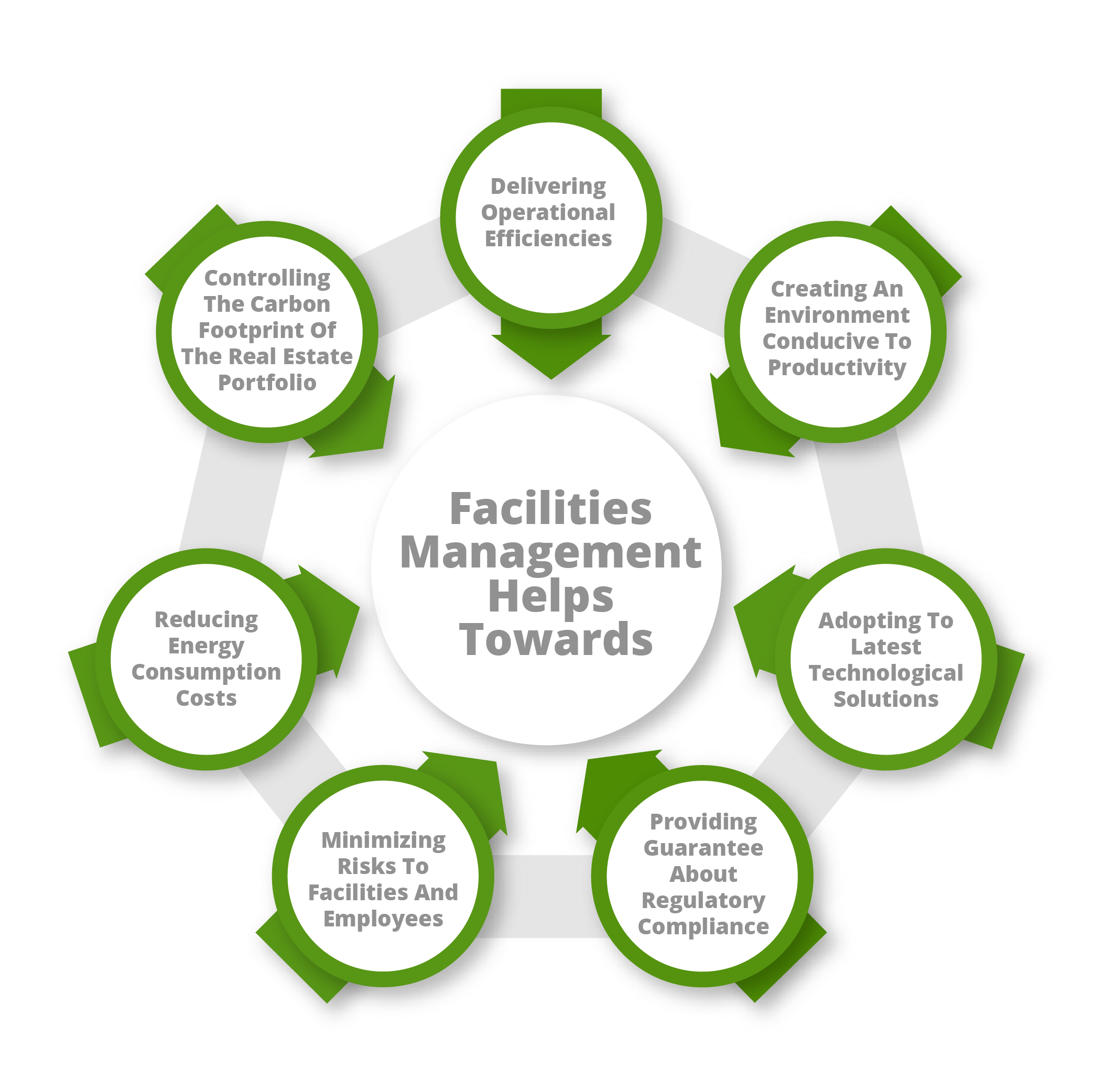Leading Benefits of Total Facility Management for Streamlined Operations
Total Facility Management (TFM) represents a tactical technique to boosting functional performance by integrating different services, such as maintenance and safety and security, under a unified management framework. The concern stays: what details benefits can organizations harness from taking on TFM, and how might these benefits transform their functional landscape?
Enhanced Functional Performance
Enhanced functional performance is a main benefit of carrying out total facility management (TFM) strategies. TFM encompasses a thorough method to managing a facility's sources, procedures, and infrastructure, eventually simplifying procedures. By consolidating numerous solutions-- such as maintenance, cleansing, area, and safety and security management-- TFM reduces redundancies and improves coordination amongst various functional features.
The integration of innovation more amplifies this performance. Advanced facility management systems supply real-time information analytics, enabling facility supervisors to make educated choices that improve process and resource allocation. Anticipating maintenance methods, for instance, prepare for equipment failings before they occur, decreasing downtime and expanding possession life expectancy.
Furthermore, TFM advertises standard procedures across numerous divisions, guaranteeing uniformity and top quality in service shipment. This uniformity minimizes operational disturbances and fosters a much more joint workplace. As an outcome, workers can concentrate on their core obligations, driving productivity and enhancing overall performance.

Expense Decrease and Savings
Implementing total facility management (TFM) not just increases functional efficiency yet likewise substantially adds to cost reduction and financial savings. By combining various services under a solitary management structure, organizations can get rid of redundancies and improve procedures, therefore lowering operational expenses. TFM makes it possible for far better procurement strategies, enabling companies to work out bulk purchasing contracts with providers and company, causing reduced rates.
In addition, TFM emphasizes preventive maintenance, which minimizes unexpected break downs and prolongs the life expectancy of crucial equipment. This positive approach not only lowers repair service prices however likewise enhances the integrity of facilitiess, guaranteeing uninterrupted operations. In addition, energy performance campaigns, commonly a vital emphasis of TFM, cause substantial cost savings on utility expenses, as facilitiess are maximized for lowered power consumption.
Improved Source Management
Reliable resource management is a keystone of total facility management (TFM), enabling companies to maximize using their possessions and labor force. By applying TFM methods, organizations can adequately analyze their resource allowance, making sure that every possession is made use of effectively and properly. This holistic approach enables the recognition of underperforming resources and the possibility for reallocation or enhancement.
In addition, TFM promotes the assimilation of modern technology for real-time tracking of resources, which aids in anticipating maintenance needs and avoiding pricey downtime. By leveraging data analytics, companies can make informed decisions about source deployment, ultimately enhancing efficiency and decreasing waste.
Furthermore, TFM advertises a culture of continual renovation, motivating groups to routinely assess and fine-tune their source management practices. Total Facility Management. This positive stance not just decreases functional disruptions yet likewise cultivates development, as staff members are equipped to recommend improvements based on their direct experiences with source use
Streamlined Communication Networks
In total facility management, streamlined communication channels play an essential role in fostering collaboration and effectiveness throughout teams. Reliable communication makes sure that all stakeholders, including facility supervisors, upkeep personnel, and service companies, are aligned with functional requirements and organizational goals. By developing clear lines of communication, groups can swiftly attend to concerns, share updates, and implement solutions, therefore minimizing downtime and boosting performance.
With systematized communication systems, info is conveniently accessible, enabling real-time updates on upkeep requests, source allowance, and job timelines. This transparency not only reduces misunderstandings yet additionally empowers employees to make enlightened choices swiftly. Structured interaction helps with better control during emergencies, making sure that all employees are informed and can respond promptly.

Raised Emphasis on Core Activities
An essential benefit of total facility management is the raised concentrate on core activities, allowing organizations to focus on their main business goals - Total Facility Management. By contracting out non-core features such as security, cleansing, and upkeep, business can redirect their resources and power towards tactical efforts that directly add to their affordable advantage and development
Total facility management integrates different operational tasks under a single umbrella, cultivating performance and decreasing redundancy. This debt consolidation not just streamlines procedures but likewise enhances responsibility, guaranteeing that every aspect of the facility runs harmoniously without diverting focus from what absolutely matters-- core service functions.
Additionally, this method enables staff members to commit their time and initiatives to jobs that drive development and improve customer complete satisfaction, instead of getting bogged down by functional challenges. With a dependable facility management companion managing everyday operations, companies can achieve higher agility, react promptly to market adjustments, and keep a sharper emphasis on their goal.
Inevitably, raised focus on core tasks leads to improved overall performance, allowing organizations to reinforce their market position and meet their strategic objectives much try this site more successfully. look these up - Total Facility Management
Verdict
In verdict, Total Facility Management dramatically boosts functional performance by consolidating vital services and leveraging data analytics for informed decision-making. Cost reductions and enhanced source management contribute to total cost savings, while streamlined interaction channels foster cooperation among stakeholders.
Total Facility Management (TFM) stands for a critical technique to boosting operational effectiveness by integrating numerous solutions, such as upkeep and protection, under a unified management framework.Improved operational performance is a primary advantage of implementing total facility management (TFM) approaches. Advanced facility management systems provide real-time information analytics, making it possible for facility supervisors to make enlightened decisions that boost operations and source allowance.Executing total facility management (TFM) not just enhances functional performance but also dramatically adds to set you back decrease and cost savings.Efficient resource management is a foundation of total facility management (TFM), enabling companies to enhance the use of their assets and workforce.